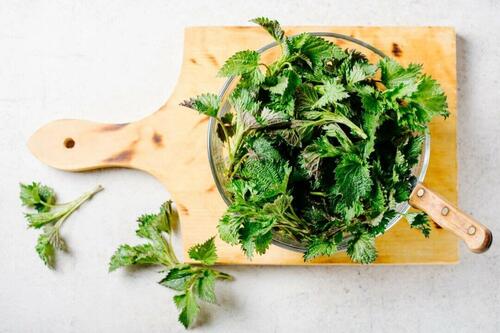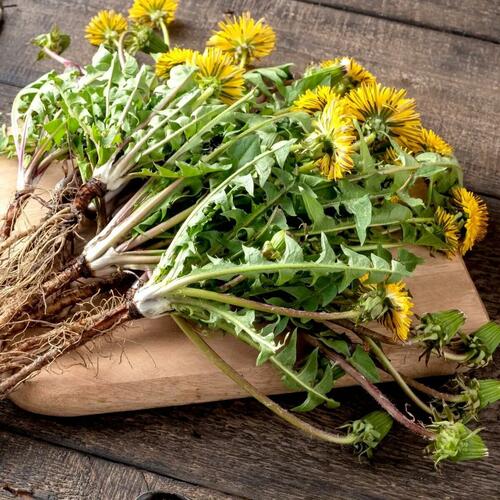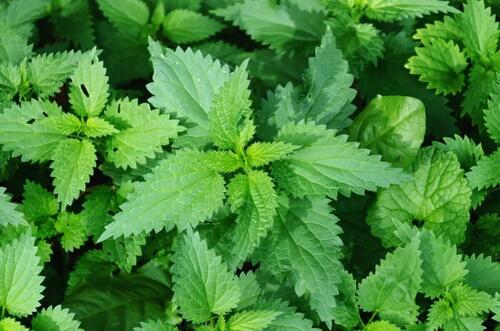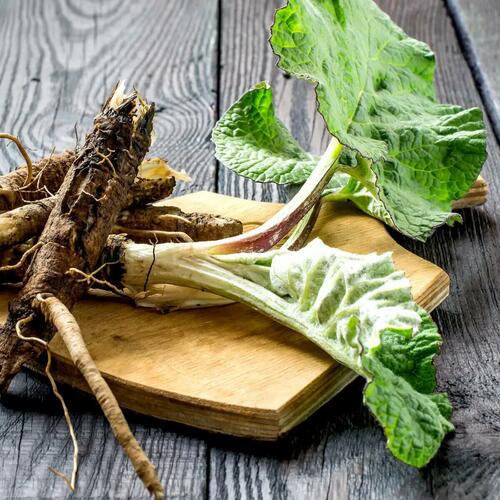Authored by Alexandra Roach via The Epoch Times (emphasis ours),
Recently, I gave a presentation about edible plants at my local library. Kitchen herbs, in fact, that double as medicinals, which people can easily grow in their gardens or on window sills. While preparing my presentation, I was reminded that this topic is immense in its breadth and depth. One number especially stood out and even stopped me in my tracks.

There are 50,000 – 80,000 plants used medicinally worldwide, according to the Center for Biological Diversity. What a number! I feel a bit inadequate with my limited knowledge of several hundred of them.
The millennia-old knowledge of herbal medicine is practiced in all regions of the world and backed up by much international research—the Near East, Russia, East Africa, North East India, and even Transylvania. The list clearly goes on.
New Review Reapproves Plants’ Anti-Cancer Qualities
In recent years, scientists have re-discovered their urge to learn more about our floral companions. This rekindling of passed-down wisdom is possibly driven by the need to find remedies for diseases that otherwise modern medicine seems unable to prevail over.
A 2024 review, published in the journal Pharmaceuticals, appears to follow this direction. The new release highlights 15 medicinal plants with potential anti-tumorigenic qualities, meaning these plants have active compounds that fight abnormal cell growth.
Interesting to me was the selection of plants featured in the review. Some of them, we are familiar with—much having been written about them—for instance, dandelion, nettles, or Curcuma longa, better known as turmeric.
Others, like the Madagascar periwinkle (Catharanthus roseus), the tropical soursop, and even a houseplant with the name of Kalanchoe blossfeldiana, we find less familiar.
However, all these plants have one common characteristic —they work “against the Majority of Common Types of Cancer,” reads the review’s headline.
Efficient Treatment for Immediate Development
The International Agency for Research on Cancer describes the worldwide cancer situation as dire. Their 2022 report states that globally most people died from lung cancer (18.7 percent), followed by colorectal cancer (9.3 percent), and liver cancer (7.8 percent). A total of 3,480,213 individuals.
Therefore, researchers of the current review call for an immediate development of “more targeted and efficient treatment plans.” In their eyes, “Plants and products derived from them have promising potential as a source of less toxic anticancer drugs.”
Blending Traditional Wisdom and Novel Nanotechnologies
To accomplish this goal, herbs are employed to keep the immune system strong, kill off carcinogens, and improve antioxidant levels in our bodies. Scientists see new nanomedicines and bioengineering techniques for immune cell therapies as innovative approaches to treating the disease.
As a community herbalist, I view things with the eyes of longevity. What traditional wisdom about these herbs has been passed on for centuries? How can the two worlds of novel research and ancient knowledge be combined for the benefit of the patient?
Anti-Cancer Plants: Research and Application
There are several herbs the recently released review mentions, which might grow abundantly in our gardens—often, we might even see them as annoying weeds that need to be fended off. Such is frequently the case for dandelions.
In the back of my head, I hear my herbal teacher repeat over and over, “Often, the herbs show up where we need them.” This holds true for one of the most robust herbaceous perennials that is native to Europe but grows all over the world in gardens and lawns, along roads and fields, and even waste areas.
Common Dandelion

Taraxacum officinale, commonly known as dandelion, is not only a medicinal herb but an edible vegetable. Especially young leaves are tender and round out the taste in any salad, gifting it a slightly bitter flavor—which is a sign of assisting digestion.
The Taraxacum genus includes over three hundred species. These have been discovered and utilized in traditional and folk medicines for centuries. German botanist Leonhart Fuchs, for example, featured the healthy properties of the plant in the 16th century in his herbal compendium, “De Historia Stirpium.”
Dandelion was also known as a drug in Arabian medicine. There, physicians recorded its utilization as early as the 10th century. Indian and Chinese medicine treated liver and digestive diseases with the common dandelion, states an article about the plant published in the National Library of Medicine.
Dandelion is a true all-rounder. Featuring among others, vitamins A, C, B, and D, the minerals potassium and calcium, and traces of iron, magnesium, manganese, and zinc.
A 2023 review carefully examined the dandelion and remarked upon its bioactive compounds. “Sesquiterpenoids, phenolic compounds, essential oils, saccharides, flavonoids, sphingolipids, triterpenoids, sterols, [and] coumarins” are sources for “therapeutic potential, including anti-bacterial, anti-oxidant, anti-cancer, and anti-rheumatic activities.”
Korean research showed that the amount of phenols and flavonoids in the plant drives its anticancer and antioxidant activities. This varies in different taraxacum species but exists in the common dandelion.
Researchers investigated a dandelion extract combination in a 2023 study. The results, published in the journal Scientific Reports, highlight the importance of inhibiting the “rapid proliferation of cancer cells and its invasion into healthy tissues” specific to breast cancer. This is exactly what dandelion extract does—it inhibits their spread and “induce death in them.”
Photodynamic Therapy is another method to target cancerous tissue. In it, a photosensitizing agent is stimulated by light, for instance by a laser. In a 2023 article in Nanomedicine, this process was tested with dandelion for “synergistic chemotherapy and photo-dynamic cancer therapy.” This transportation method succeeded in the delivery of the active compound to the cancer cells and disrupted their homeostasis, thus portraying anti-cancer and anti-tumor effects.
Stinging Nettle

Runner-up in the title of highly medicinal weeds is Urtica dioica. In many temperate places, nettles grow like a pest and are unwanted wildflowers by many.
Contrary to popular reason, I recently transplanted some nettles into my garden and even spread nettle seeds in my best effort to establish them there. Nettles are delicious plant nutrition and are a great addition to soups and salad dressings, as the hairy stingers lose their power when processed.
Full of provitamin beta-carotene, vitamins A, B, and C, minerals iron, magnesium, potassium, and calcium, this protein-rich perennial herb is loaded with health benefits. But the loaded weed can do more.
A 2020 research article features the potentially anticancer properties of nettles. When evaluated, the extract of Urtica dioica showed promising effects on the proliferation rate of “hepatocarcinoma and colon-cancer cell lines at specific doses.”
In a 2022 study published in the Asian Pacific Journal of Cancer Prevention, plant medicine proved its anticancer qualities against three different types of cancer cell lines. Testing of urtica dioica’s cytotoxicity was performed in vitro (via mycoplasma testing) and in vivo (in a living organism, in this case, rats). Findings were positive and showed that nettles may work against breast cancer through their anti-tumoral properties.
According to another study, directed to research the herb’s potential healing qualities in regards to human colon and gastric cancer, nettles also induced apoptosis and “inhibited proliferation of gastric and colorectal cancer cells,” while not having any toxic side effects on normal cells.
Greater Burdock

Continuing to feature weedy wildflowers that grow in many disturbed areas around the United States, and are surely to be found in an empty parking lot, pasture, or along fields and roads in your area, is burdock.
Like Dandelion, burdock is a member of the Asteraceae family (the Aster family) and grows seemingly everywhere. Similarly, the medicinal parts of burdock include roots and leaves, with the addition of seeds.
Arcticum lappa is likewise high in minerals and vitamins, including the B vitamins thiamine, riboflavin, and niacin. However, it also features lignans in roots and seeds, amino acids in the roots, phenols, sterols, and fatty acids in the seeds, and a “plethora of biological activities and pharmacological functions.”
One of burdock’s compounds, lappaol F (a natural lignan), is an anticancer agent that “inhibits tumour cell growth by inducing cell cycle arrest,” states a 2021 study while noting that the underlying processes of burdock’s anticancer qualities remain unclear.
Nevertheless, the plant is effective and researchers suggest that a potential anticancer drug could be developed from the medicinal herb.
A review published in Inflammopharmacology, emphasizes the century-old traditional medicinal uses of burdock in Europe, North America, and Asia. It highlights the plant’s anti-inflammatory qualities and detoxifying effects, as well as anti-tumor properties, especially its “potent inhibitory effects on the growth of tumors such as pancreatic carcinoma.”
Burdock has even proven effective against “multi-drug resistant cancer cells.” A study investigated six lignans present in the burdock seed and combined them as non-toxic chemotherapeutic agents. Results showed that they “possess promising MDR [multidrug resistant] reversal activities.” The study also tested and verified this effect in combination with a chemotherapy drug named doxorubicin.
Remaining 12 Anti-Cancer Plants
The remaining 12 plants examined in the recent review are soursop (Annona muricata), black calla (Arum palaestinum), hemp (Cannabis sativa), Madagascar periwinkle (Catharanthus roseus), turmeric (Curcuma longa), licorice (Glycyrrhiza glabra), moringa (Moringa oleifera), hibiscus (Hibiscus rosa-sinensis), milk thistle (Silybum marianum ), oleander (Nerium oleander), kalanchoe (Kalanchoe blossfeldiana ), and ashwagandha (Withania somnifera L).
Turmeric, licorice, hibiscus, hemp, ashwagandha, and milk thistle are well known—beyond the ears of an herbalist. Soursop might fall into this category for some, especially those living in tropical regions.
Then, some might make us pause, as we see the plants more as blooming decoratives in the garden or house plants, like oleander, the black calla, Madagascar periwinkle, or kalanchoe. Being native to the Indian subcontinent, and being used mostly in Southern Asia, moringa may be the most foreign of them all.
Yet, in total, they are acclaimed plant medicines.
Ongoing Phytopharmaceutical Research
A 2022 review, for instance, hails the healing qualities of soursop. Its “pharmacological effects of anti-cancer, anti-microbial, antioxidant, anti-ulcer, anti-diabetic, anti-hypertensive, and wound healing” are impressive.
Another review features a study in which patients were given 300 milligrams of soursop extract (leaf water) in capsules after breakfast. This restrained colorectal cancer cell growth.
A phytotherapeutic that likewise targets colorectal cancer is ashwagandha. A 2023 study found that the herb and its bioactive compounds “kill cancer cells via at least five separate routes.”
It has even been named “a wonder drug” in the alternative field and has shown remarkable bioactive compounds that function as “anti-cancer, anti-inflammatory, apoptotic, immunomodulatory, antimicrobial, anti-diabetic, hepatoprotective, hypoglycaemic, hypolipidemic, cardio-protective and spermatogenic agents,” as outlined in a comprehensive review.
Numerous studies and reviews, however, stress the unfortunate fact that further research is needed due to “the lack of established quantities and concentration measurements,” or simply the lack of wide-ranging medical research about our floral surroundings.
Contraindications and Side-Effects
In general, phytopharmaceuticals are powerful medicine.
Although many of the plants do not have any side effects and often naturally target cancer cells without affecting healthy cells, a mechanism not quite understood by science yet (as mentioned above). At the same time, ingesting the wrong plant or the wrong dosage can harm or even kill.
As for dandelions, nettles, and burdock—there are some guiding principles:
- Nettles should not be eaten raw. The fresh leaves will sting.
- Dandelions can make your stomach upset if too many leaves are ingested or after prolonged use, as it can increase the hydrochloric acid production (HCl) in the stomach and lead to loose stool.
- Dandelion root should be taken with caution if the individual suffers from excess HCl, gastritis, ulcers, or heartburn.
- During the first trimester of pregnancy, burdock should only be prescribed in mild doses. Also, take with caution if suffering from hypoglycemia.
Tips:
When gathering herbs or plants in the wild or public spaces, please collect your specimens wisely. This means, pick plant matter only away from dirty or polluted areas and wash before eating or processing. Also, never take the whole plant (you want it to continue to live and come back the next year).
Note:
For all individualized herbal recommendations and dosages, please consult with your local herbalist. If you are on any medications consult with a physician before taking herbal supplements. The author is writing for informational purposes only and is not acting in the capacity of a doctor or licensed dietitian-nutritionist.